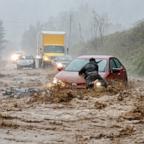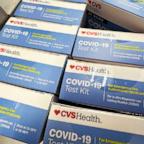What the 2016 Republican primary can tell us about 2024
The 2016 Republican nomination race was a far more crowded affair, but the New Hampshire primary that year can still tell us something about tonight. Eight years ago, Trump won with just 35 percent of the vote, but he carried most cities and towns in the Granite State because the vote was heavily fragmented. (Like in much of New England, New Hampshire’s municipalities, not counties, are the more important administrative divisions.) Overall, six candidates won between 7 and 35 percent statewide, and the next-closest contender was John Kasich, who won only 16 percent.
Looking at the 2016 map, the areas that Trump carried with less than 40 percent — colored pink or light purple — will hold the key to tonight’s result. This is especially true of areas in the south-central to southeast portion of the state, which produced about three-fourths of the _total_ 2016 Republican primary vote. We’ll want to see to what degree Trump has won over Republicans in these areas — and just how many independent voters show up, as the polls suggest they are more likely to prefer Haley.
One key area to watch will be the Seacoast, New Hampshire’s southeastern corner. This part of the state has many affluent and highly-educated towns where Kasich ran just behind Trump, such as Portsmouth and Stratham. To have any chance of an upset, Haley will need to perform strongly here, and hope that the region’s Democratic-leaning independents decide to participate in the GOP primary (much of the area is strongly Democratic). Haley would also need to hold down Trump’s margins in the most vote-rich part of the state, the south-central Merrimack Valley, which includes New Hampshire’s two largest cities — Manchester and Nashua — while also making inroads in highly-educated towns in the same vicinity, such as Bedford and Amherst. At the same time, the southeastern part of this region was much more strongly pro-Trump in 2016, so the degree to which he can run up the score in places like Salem will be important.
Moving slightly north, the capital of Concord is solidly Democratic, but it still cast the third-most GOP primary votes after Manchester and Nashua in 2016. Trump won less than 30 percent there, so it’s another must-watch spot. To the northwest, the areas where we’d largely expect Haley to win — and she needs to win big — are highly-educated areas along the Connecticut River (the Vermont border) such as Lebanon and Hanover (home to Dartmouth College), which Kasich carried eight years ago.
—Geoffrey Skelley, 538







